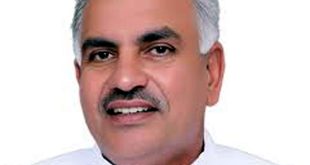
NDA 3.0: NDA government is going to be formed in the country once again under the leadership of Prime Minister Narendra Modi. With this, the demands of all the constituent parties of the grand alliance have started coming to the fore. All political parties want to get more and more important ministerial posts at the center, but in such a situation, it is reasonable for the question to arise in the minds of the common people that can more and more ministers be made at the center? Are the ministers of the same type or what? Who has what responsibilities. Let us put an end to all such questions and confusions in today's report…
The most basic and important thing to understand is that there are fixed rules for appointing ministers in the central government and according to that only a certain number of ministers can be appointed. It is not possible to appoint everyone as a minister.
The formation of the cabinet is done according to the Indian constitution
The formation of the Cabinet at the Centre is done as per Articles 74, 75 and 77 of the Constitution of India. Article 74 states that the Cabinet is formed by the President on the advice of the Prime Minister. The Prime Minister has the highest position in the Cabinet. With his aid and advice, the President gives consent to the formation of the Cabinet. Article 75(1) of the Constitution states that the Prime Minister is appointed by the President. The President consults the Prime Minister for other members of the Cabinet and also has the privilege to expand the Cabinet.

The cabinet is answerable to the Lok Sabha
Government ministries or departments are formed according to Article 77 of the Constitution. This work is also done by the President on the advice of the Prime Minister and he assigns each ministry to each person on the advice of the Prime Minister. The Union Cabinet is collectively responsible to the Lok Sabha. There is also a secretary-in-charge in each department to assist the ministers in policy matters and general administration. The Prime Minister and Ministers are administered the oath of office and secrecy by the President before assuming office.
How many ministers can there be in the central government?
According to the Constitution, the total number of members in the Union Cabinet is determined according to the total number of members in the Lok Sabha. 15 percent of the total number of members of the Lok Sabha can be made ministers, that is, 15 percent of the 543 members of the Lok Sabha can become ministers at the Centre, that is, the Prime Minister's cabinet is formed on this basis. Modi can have a maximum of 81-82 ministers.
There are three types of ministers
Considering the importance and workload of the ministries, there are three types of ministers in the Union Cabinet of India, including Cabinet Ministers, Ministers of State and Ministers of State (Independent Charge). Cabinet Minister is the most important among these three. Cabinet ministers are the heads of their ministries and report directly to the Prime Minister, so the Prime Minister recommends to the President to appoint his most qualified MP as a Cabinet Minister. They can also have more than one ministry. All the decisions of the central government are taken in the cabinet meeting so it is mandatory for the Cabinet Minister to attend the cabinet meeting.
The Minister of State reports to the Cabinet Minister
Looking at the second type, the Ministers of State are actually the aides of the Cabinet Ministers. In fact, the Ministers of State are appointed to assist the Cabinet Ministers in ministries of greater importance and responsibility, wider scope and greater responsibility. The Ministers of State report directly to the Cabinet Minister. They do not participate in the Cabinet meetings. Usually one or two Ministers of State are appointed in major ministries.

are close to the Minister of State
Talking about the third and most important type, MPs with Minister of State (Independent Charge) hold smaller or less important ministries. Though each ministry has its own importance, the responsibilities of their ministries are relatively less. This means that the ministry can be run with the help of a Minister of State without any Cabinet Minister. Ministers of State are given independent charge of such ministries and they report directly to the Prime Minister as a Cabinet Minister instead of reporting to any Cabinet Minister. However, he does not attend cabinet meetings.
 look news india
look news india
